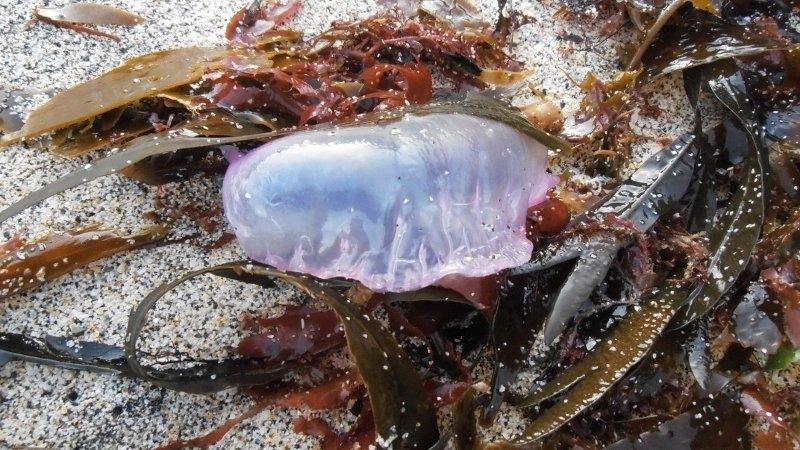Cornwall and Wales deadly man-of-war five-year record
- Published

The Cornwall Wildlife Trust called the strandings an "an unprecedented event"
Record numbers of Portuguese man-of-war have washed up on Cornwall and Wales beaches say experts.
The Marine Conservation Society (MCS) said it had recorded the highest number for five years.
Cornwall Wildlife Trust (CWT) say they have recorded 144 of the creatures, compared with the previous record of 40 in 2009.
The CWT called it an "an unprecedented event" and urged people to be cautious.
Perranporth beach was temporarily closed on Tuesday because of the high number of the creatures.
More on the deadly Portuguese man-of-war and other stories from Cornwall

What is a Portuguese man-of-war?
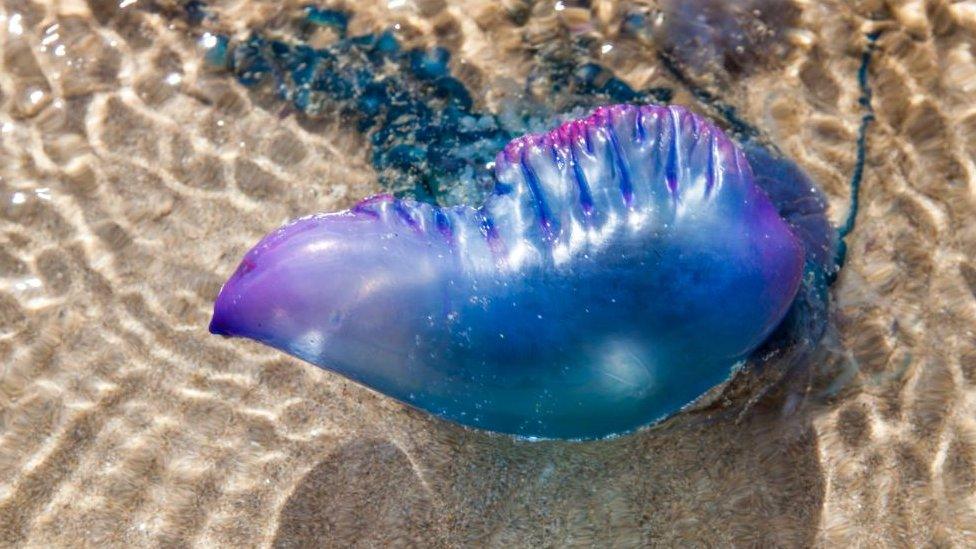
The man-of-war can be tempting to children because it looks like a deflated balloon
The (Physalia physalis) is not a jellyfish, but a floating colony of organisms dependent on one another for survival
Its gas-filled bladder (sometimes known as the sail), enables it to float on the ocean surface and drift with the current
Its sting - delivered from tentacles which can reach up to 50m below the surface - is extremely painful for humans and can be fatal in rare circumstances
Hundreds of swimmers are stung every year, especially when huge numbers appear in coastal waters

The man-of-war have been washed on to shores by high winds and have been spotted on the north and south Cornwall coasts and in south Wales.
Lifeguards and the CWT are alarmed by the risk to swimmers and other beachgoers from the creatures' deadly tentacles, which usually stretch about 10m (30ft).
They can also be attractive to children because of their purple colour which makes them appear like deflated balloons.
Matt Slater from the CWT urged people "to be cautious" although he said "stings are incredibly rare".
He said: "The man-of-war is actually a beautiful life form, wonderfully adapted to life in the open ocean and are only seen in extremely rare cases on our shores."
If symptoms become more severe, or a sensitive part of the body has been stung, you should seek medical help.

The man-of-war have been washed on to shores by high winds
- Published13 September 2017
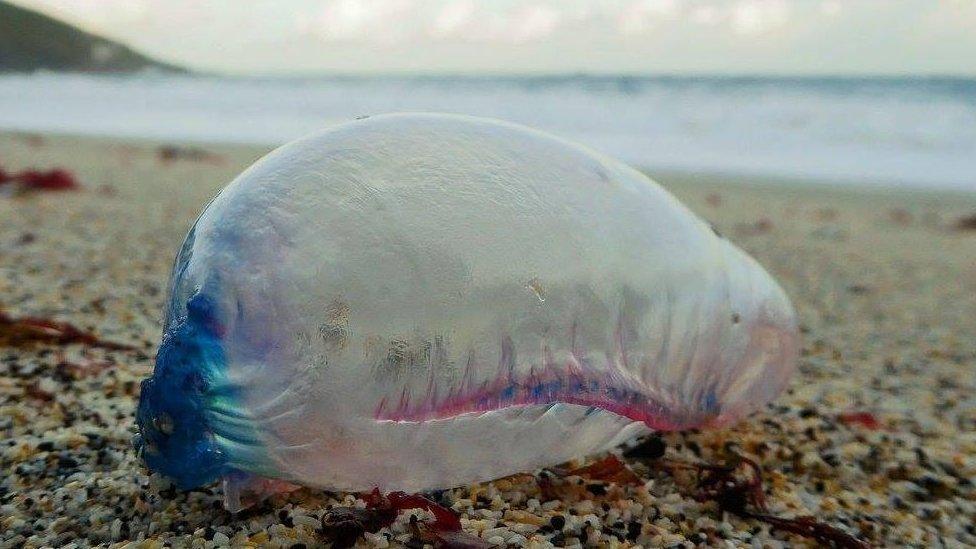
- Published12 September 2017
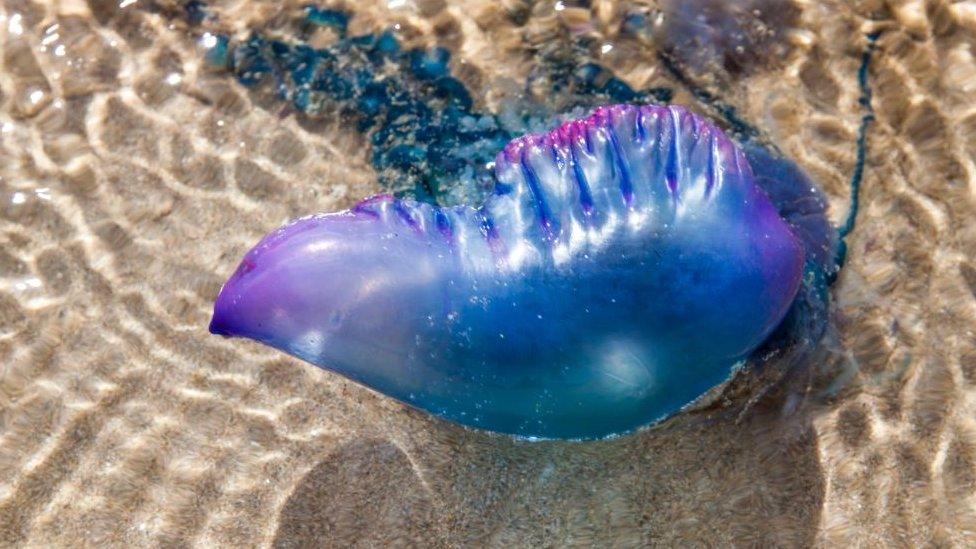
- Published27 July 2017
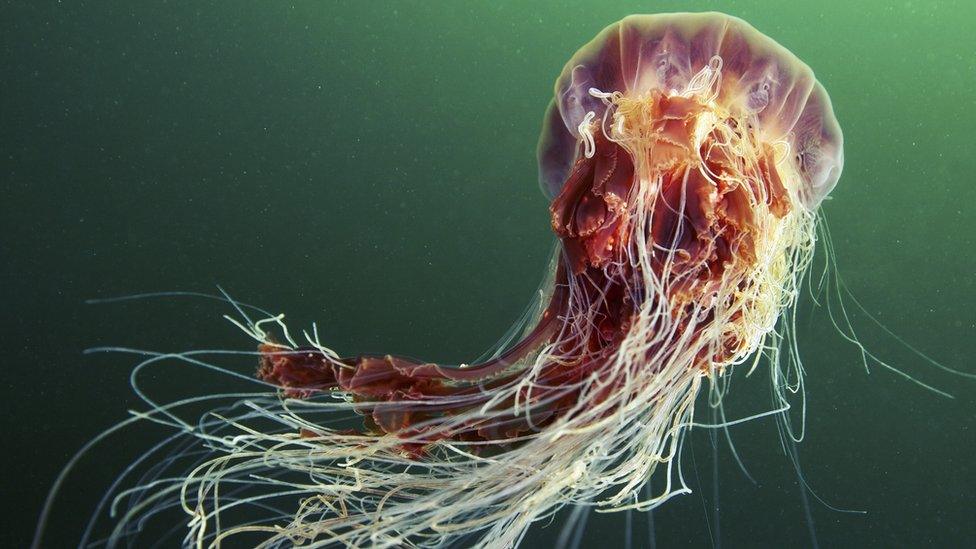
- Published22 September 2016
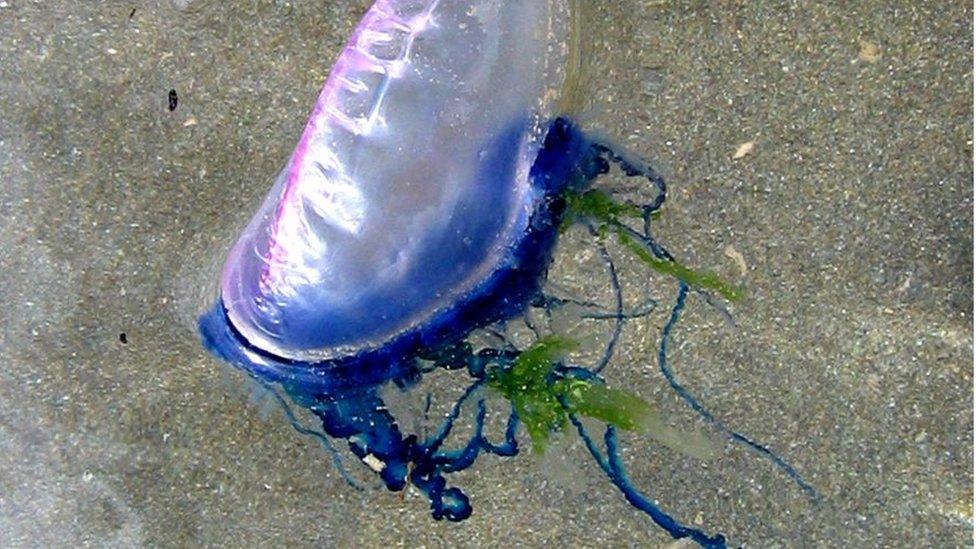
- Published30 July 2016
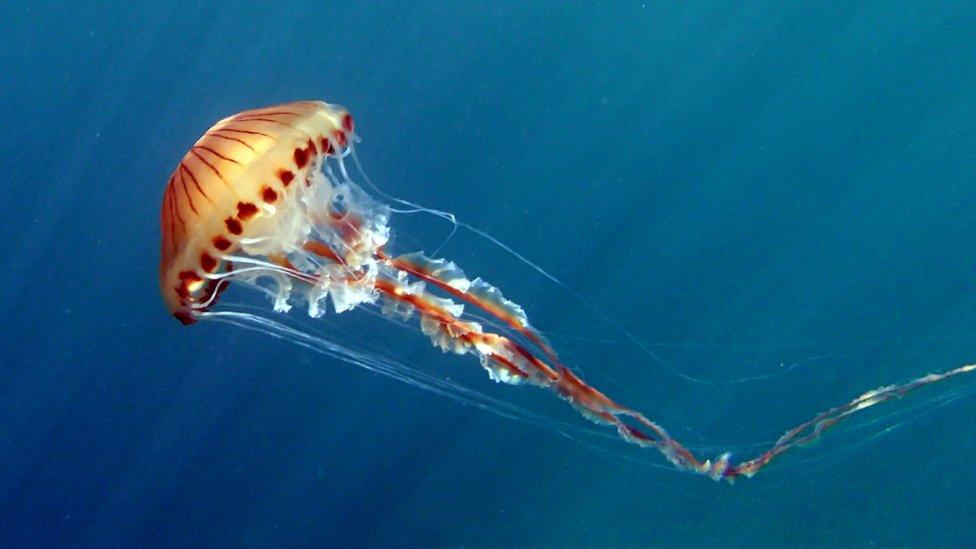
- Published31 July 2015
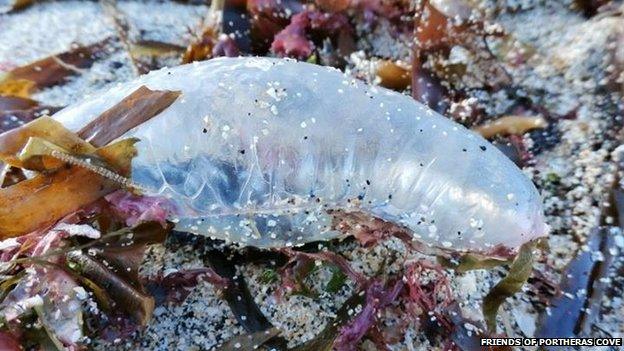
- Published7 September 2012
